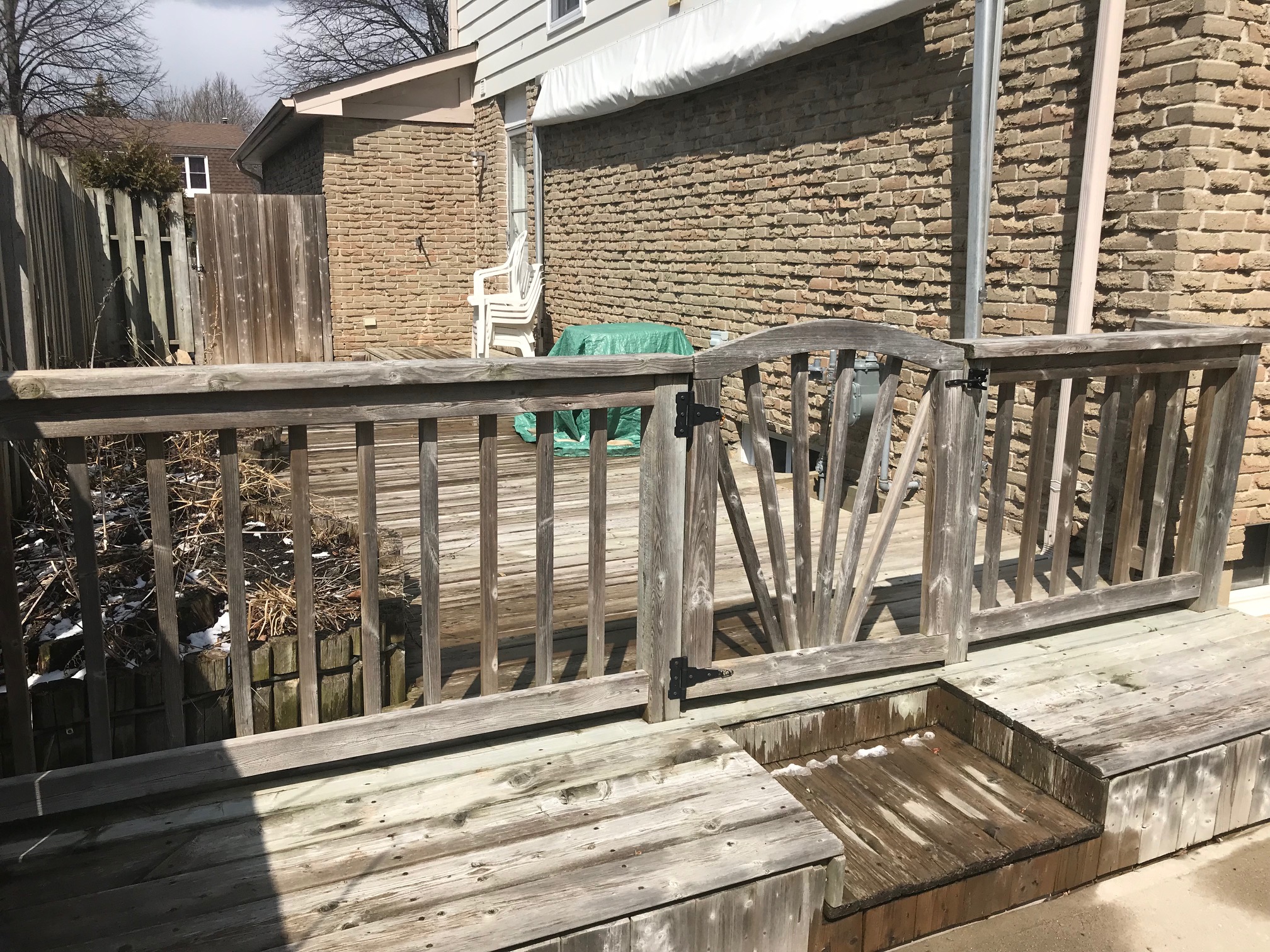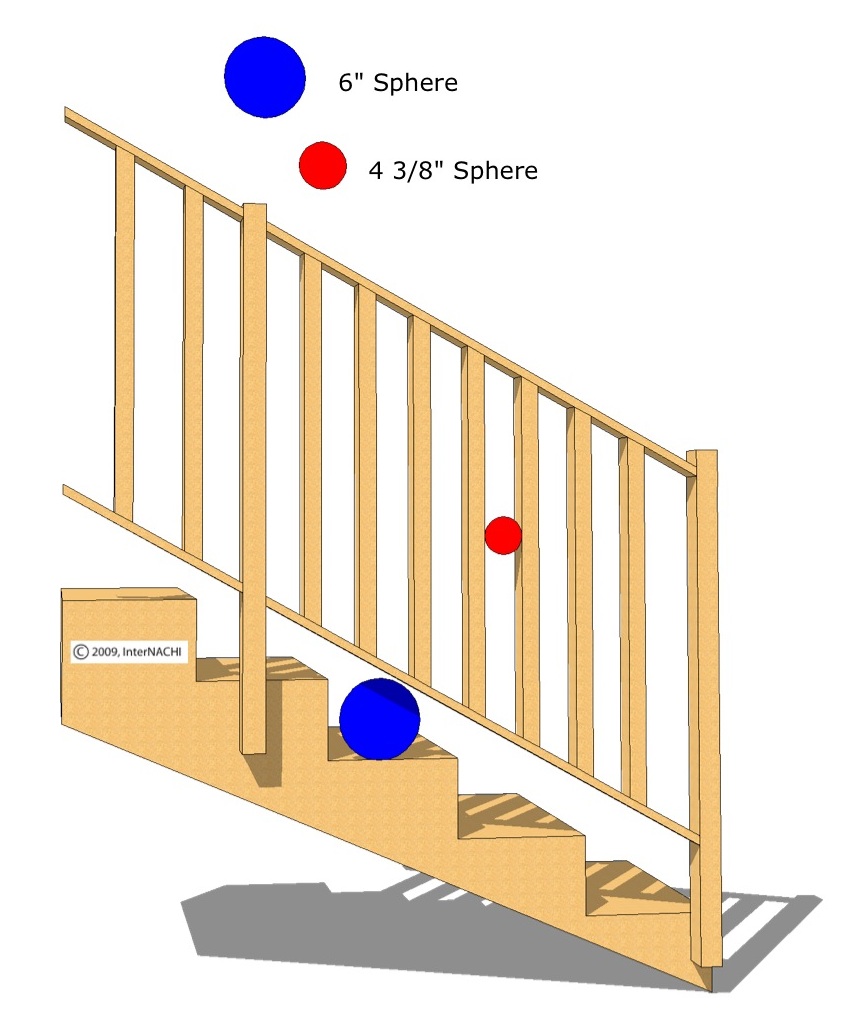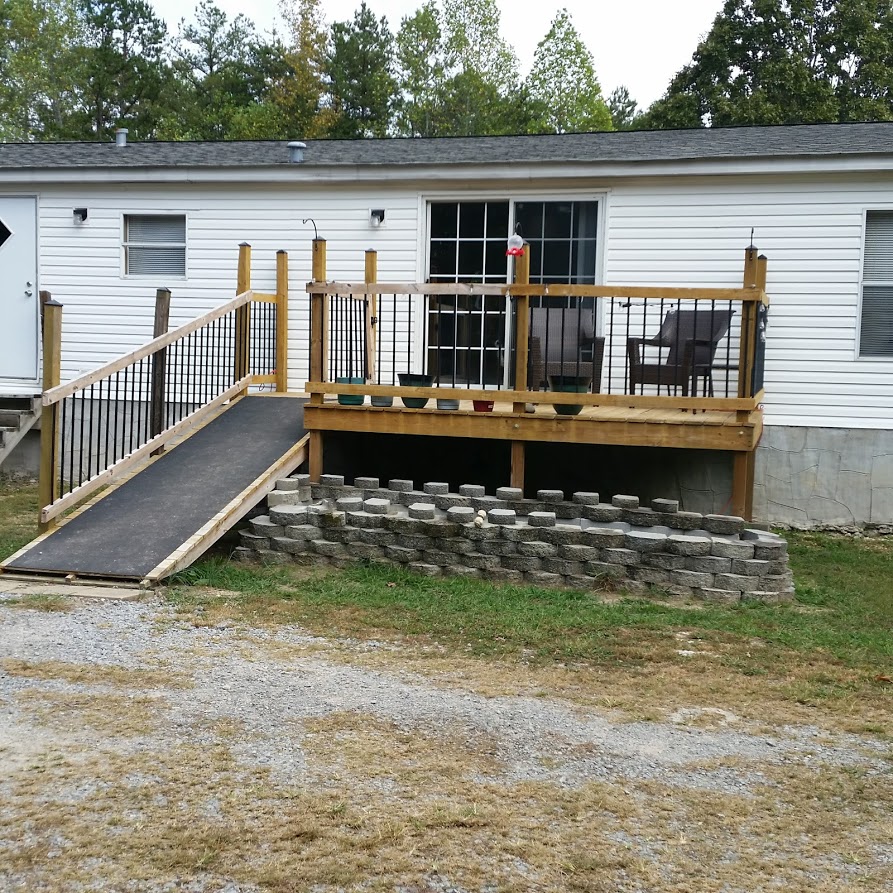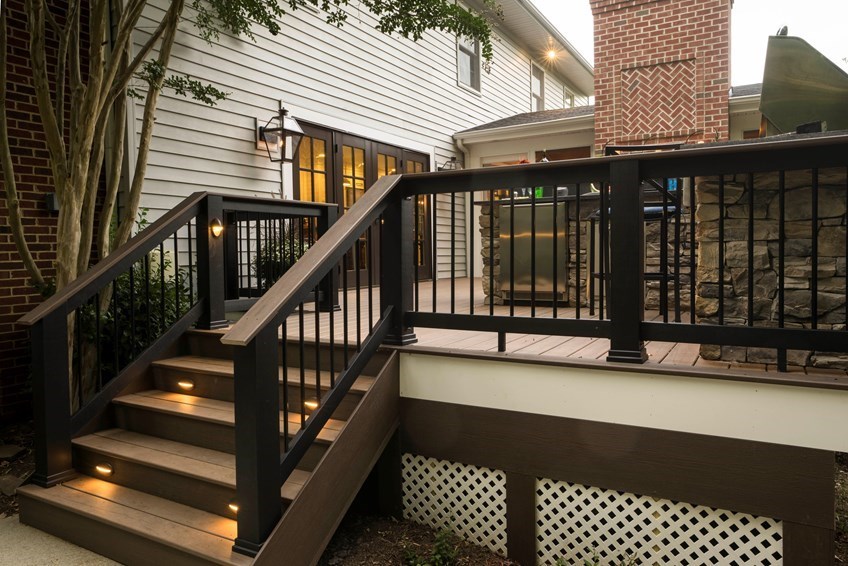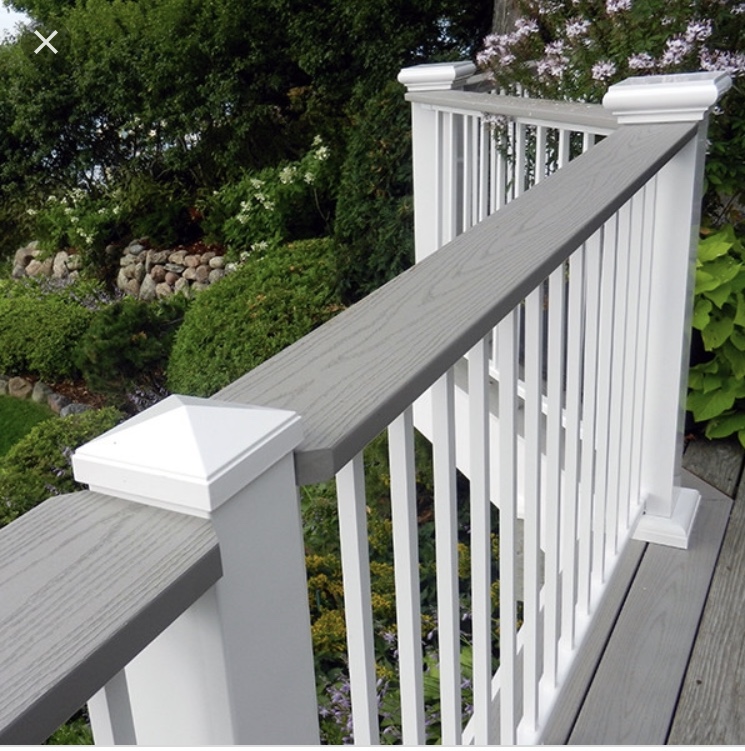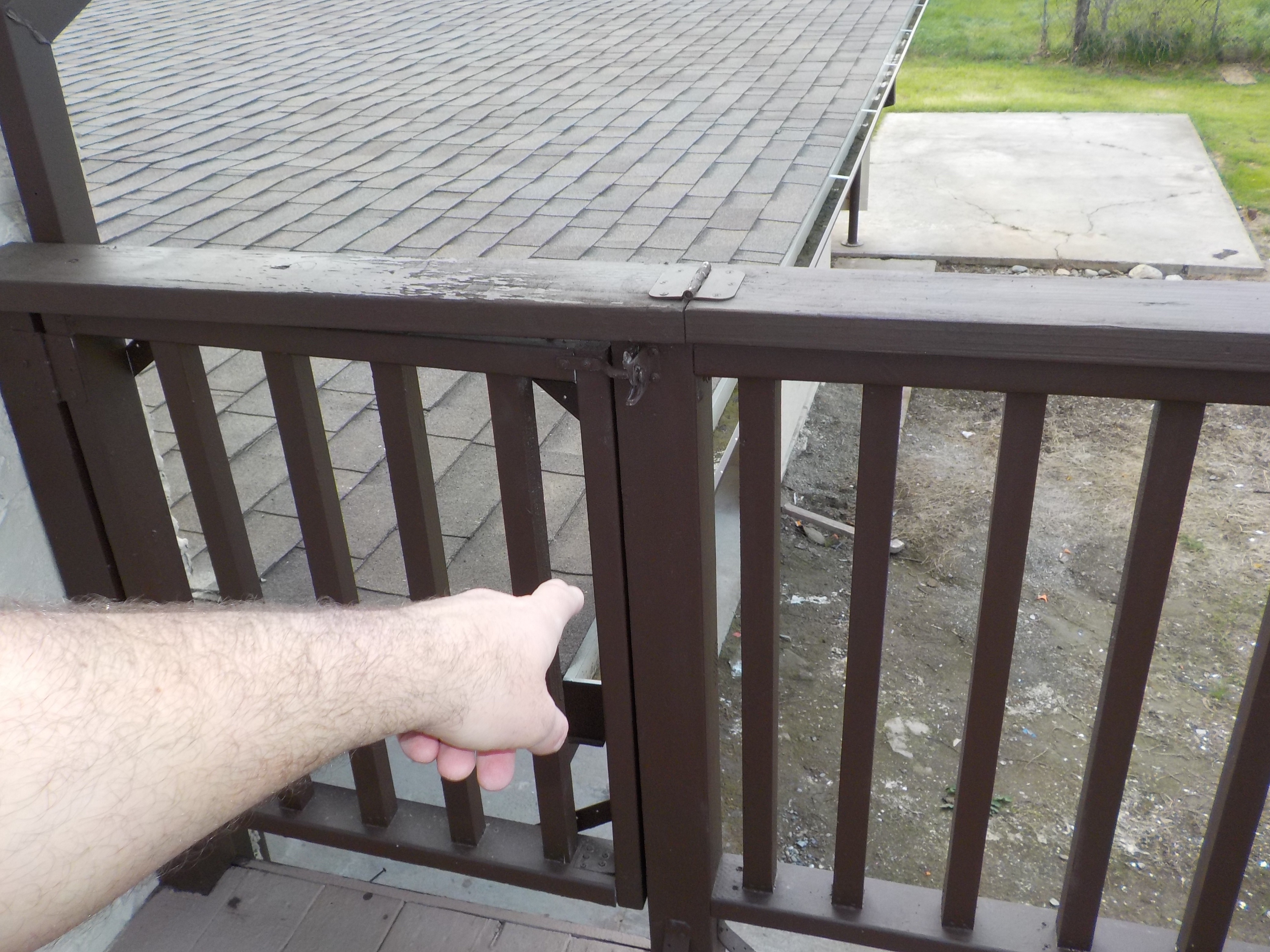Our inspection findings of an exterior deck found the guardrail had wood decay and balustrades are a safety hazard. The left guardrail should be replaced were wood decay is present. The horizontal balustrades are a safety hazard because they are easy for children to climb over, and recommend replacement to ensure safety.
Inspection of the decking observed correct board spacing of 1/8" to allow water to drain, guardrail spindles correctly spaced and adequate guardrail post spacing for stability. The electrical outlet was non functioning and needs to be replaced with a GFCI outlet. Deck boards were staggered correctly.
Ledger flashing.
Ledgers should have top and bottom flashing to prevent rot, the exterior cladding such as vinyl siding can act as the counter flashing. Aluminum should be avoided since contact with pressure treated wood and galvanized fasteners can cause rapid corrosion of the aluminum.
Deck ledgers should not be attached to brick veneer, stone, EIFS and stucco. EIFS and stucco should be cut back so the ledger can be directly attached to the band joist but this makes them difficult to flash properly and weather proof.
The decking on a deck should be spaced 1/8" to allow water to flow thru. The decking should be staggered to allow that the butt joints do not end up on the same joist side by side. Also, staggering the decking so that each plank is attached to at least 4 floor joist.
my essay is on decks Attached is a picture of my brothers new deck I observed that the planking was at least 3/8 apart to allow water to drain and all the balusters are no more than 4 inches apart a GFCI receptacle was added to the back wall
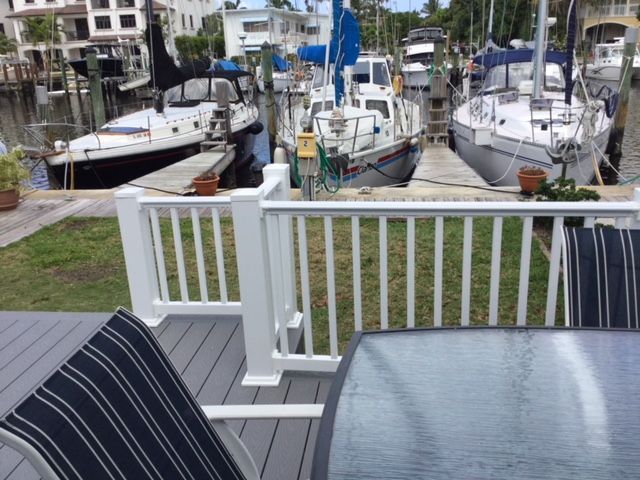
Grades and swales The finish grade should be sloped away from the building for 10 to 15 feet. Low spots that may lead to water pooling should be evened out to prevent the possibility of standing eater near the foundation
I chose “Green Roof Inspections.” There are two types of green roofs, intensive and extensive. Intensive is a higher maintenance roof. It includes vegetables, shrubs, trees, etc. Extensive roofs are less elaborate, requiring less maintenance. Green roofs have multiple layers. There should be a roofing membrane, followed by membrane protection and a root barrier, insulation, drainage or water storage barrier, followed by the growing medium and then the vegetation. There are a few things to watch out for when inspecting a green roof. Proper root protection should be installed, otherwise structural issues may occur. Green roofs should have their weight evenly distributed across the roof. Drainage should be unimpeded. And high flammable grasses and vegetation should not be grown. They should be replaced with succulents, which are not highly flammable and retain water well.
My Essay for how to perform a deck inspection course. This image comes from the nachi pictures on child safety for rail space. This is a very comin Problem found due to so many decks and stairs being built or repaired by un informed people and more comin in in permitted applictations
This is my Research and writing exercise on dryer vent safety that is from the nachi library of inspections, This should be a very important article for any home owner. Many do not think about maintaining and cleaning the dryer vent and the problems associated with a plugged and dirty vent. utilty cost from extra time and energy to dry because of the moisture build up and the fire hazard it poses.
the deck I’m sowing has a horizontal railing system and is dangerous for many reasons , the spacing between rails is too large and should be spaced at 4"oc and the horizontal rails act as a ladder esp to small children , repairs are needed.
Inspection of this deck reveled some safety issues. As you can see there is only one handrail on the left hand side, on the right side there is not a handrail. This is safety issue as it is a ramp, anyone in a wheelchair could loose control and go off the side of the ramp and into the flowerbed which would result in injury. This should be addressed ASAP.
This an image of a wooden deck. It has many construction elements including a lower deck installed at grade a raised deck with handrails three separate sets of steps, and the raised deck being attached to house with a ledger system, also a spa is installed in an area of the raised deck which I’m would have to question the outer steps not having a handrail.
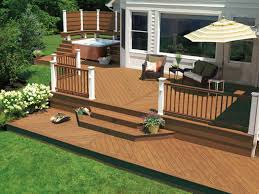
Installing bracing parallel to the beam helps keeping decks from racking not only from high winds or sizemic tremors but just having people on it. Measuring 2 foot by 2 foot and installing them on the diagonal anchoring them with 3 eights hot dipped lag bolts with washer and nuts.Installing a diagonal treated board across the bottom of the floor joists also helps with racking.
When installing the deck boards, use gaps between boards to achieve drainage. And most decks need and can achieve spacing between the deck boards for drainage. The goal is to have about an one eighth inch gap between all decking boards.
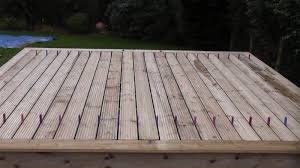
Deck receptacles: This article is about the 2008 NEC requirements for outdoor receptacle locations which I learned that the requirements are a supplement to the 2005 code, and as an inspector you need to suggest the installation of outlets specified in the code as a safety concern if the property was built before 2005, and I would explain the real risk of the use of extension cords if there is inadequate number of outlets, because some people may use them at least temporarily before they go to the trouble of installing outlets.
Regarding decks attached to a house. A deck cannot ever be attached to the structure of a house at an overhanging section or cantilevered section. This is unsafe and can cause structural damage to a house by pulling on that framing.
The attached image is a picture of a deck. With the 4 risers, a handrail is necessary, however the handrail is very wide, making it ungraspable. The decking is spaced just enough to allow water to pass through. The lighting on the stairs is a great feature to keep people safe when they are walking up the stairs after dark.
On a deck the top of the balusters should be cut at an angle to deflect water/ moisture l and to prevent wood rot. Also the spindles should be less than 4 inches wide and never installed parallel for child safety, to prevent them from climbing and or going through/ falling.
I chose a picture of the clearance of a non treated deck from grade. If the footing is not concrete it should be pressure treated wood to prevent wood rot, untreated wood in contact with soil may speed up rot or wood decay
Out of 45 million decks constructed in the U.S. only 40% are considered safe. Attached is an example of a deck that is unsafe. The deck had a door installed which is unsafe considering the height of the deck. The railing was loose throughout the entire deck and floor boards were loose. This deck should be evaluated and repaired by a licensed contractor.

